Ice Fishing 101: Top Spots and Tips for Beginners
Winter transforms lakes and rivers into enchanting ice-covered landscapes, opening up a whole new world of fishing opportunities. Ice fishing offers a unique way to enjoy the outdoors during the coldest months, combining the thrill of the catch with the serene beauty of winter. For beginners, this traditional winter activity might seem intimidating at first – drilling holes through ice, braving cold temperatures, and using specialized equipment. However, with the right knowledge, preparation, and safety precautions, ice fishing can become an enjoyable and rewarding winter pastime that creates lasting memories. This guide will walk you through everything you need to know to start your ice fishing journey safely and successfully.
Understanding the Ice Fishing Basics
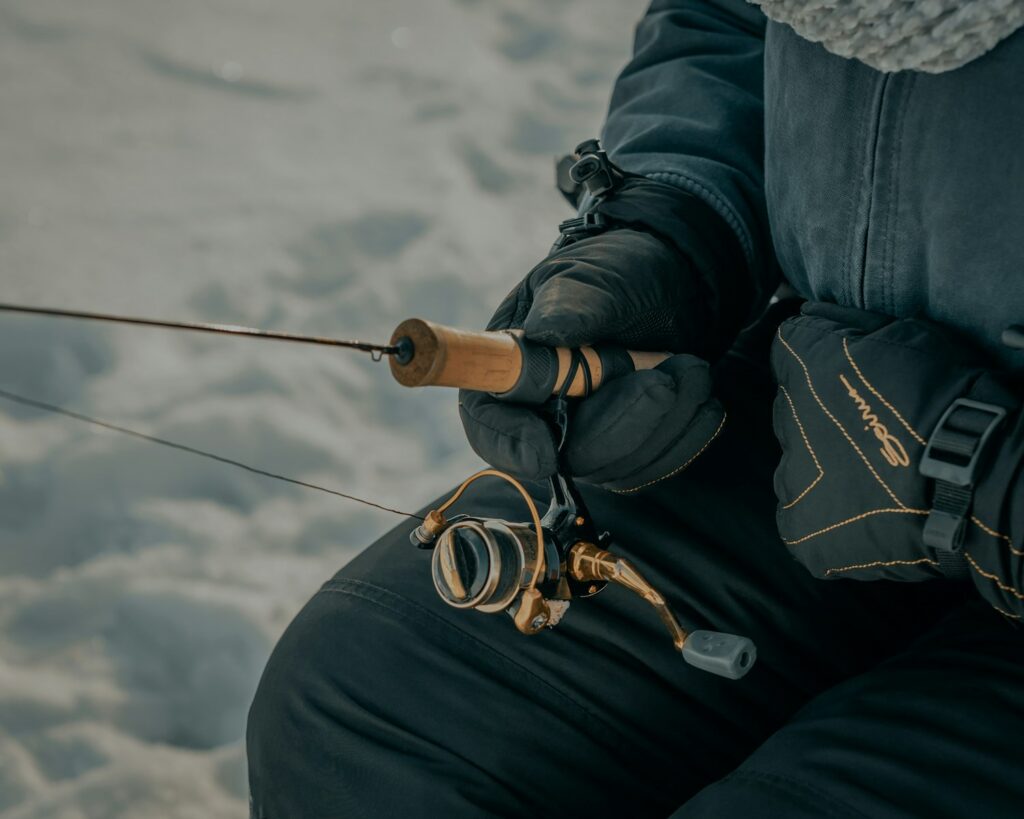
Ice fishing involves catching fish through holes drilled in frozen bodies of water, typically using shorter rods and specialized equipment designed for the unique challenges of winter fishing. Unlike open-water fishing where you might cast long distances, ice fishing is a more stationary activity where your presentation is vertical – dropping your bait or lure directly below your fishing hole. The fundamental concept is simple: find where fish are congregating under the ice, drill a hole, drop your line, and wait for the bite. What makes ice fishing particularly appealing is its accessibility; with minimal gear investment and a basic understanding of techniques, beginners can quickly start catching fish through the ice.
Safety First: Understanding Ice Conditions
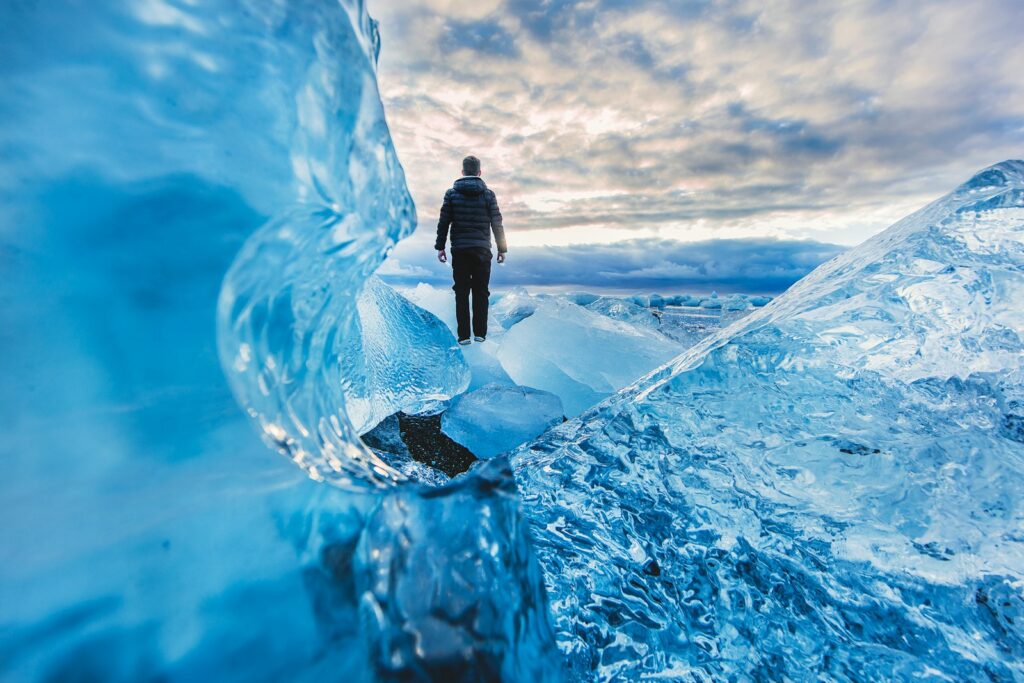
Before venturing onto frozen waters, understanding ice safety is absolutely critical – this knowledge could literally save your life. As a general rule, you need at least 4 inches of clear, solid ice to safely support a person on foot, 8-12 inches for small vehicles, and 12-15 inches for larger vehicles – but these are minimum guidelines that can vary based on ice quality and conditions. Always check ice thickness regularly as you move across a frozen lake, using an ice chisel, auger, or spud bar to test it ahead of you.
Remember that ice thickness is rarely uniform across a body of water; areas near inlets, outlets, springs, or vegetation typically freeze more slowly and can remain dangerously thin even when surrounding ice seems thick enough. Never go ice fishing alone, always inform someone of your plans and expected return time, and carry essential safety gear including ice picks, a throw rope, and a personal flotation device.
Essential Gear for Beginners

Starting with the right equipment makes ice fishing both safer and more enjoyable, but beginners don’t need to invest in expensive specialized gear right away. Your basic kit should include an ice auger (hand augers are more affordable for beginners, while power augers make quicker work of drilling holes), an ice scoop to keep your fishing hole clear of ice chips, and short ice fishing rods designed for the limited space and vertical presentation required. Tackle requirements are relatively simple – small jigs, spoons, and live bait like waxworms or minnows are effective for most target species.
While not strictly necessary for your first outings, items that enhance comfort include portable shelters (ice houses or tip-ups), a portable chair, hand and foot warmers, and a thermos of hot drinks. As you gain experience, you might consider investing in electronics like fish finders, which can dramatically improve your success by showing you exactly where fish are swimming beneath the ice.
Dressing for Success on the Ice
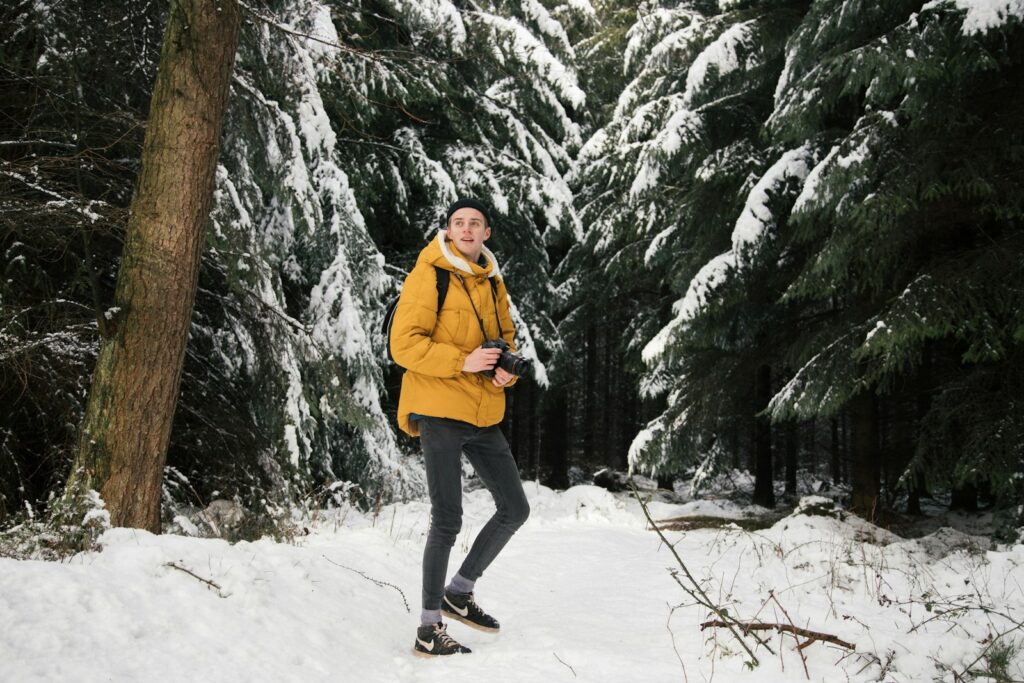
Proper clothing can make the difference between a miserable experience and an enjoyable day on the ice, as exposure to cold temperatures, wind, and wet conditions presents serious challenges. The key to staying warm is layering, starting with a moisture-wicking base layer that keeps sweat away from your skin, followed by an insulating middle layer like fleece or wool, and topped with a windproof, waterproof outer shell. Your extremities need special attention – insulated, waterproof boots rated for sub-zero temperatures are essential, as are waterproof gloves or mittens (mittens are generally warmer, but gloves offer better dexterity for handling tackle).
Don’t forget proper head protection: a significant amount of body heat escapes through your head, so wear an insulated hat that covers your ears. Sunglasses serve double duty, protecting your eyes from both harmful UV rays and the intense glare reflected off snow and ice that can cause snow blindness even on cloudy days.
Top Ice Fishing Destinations for Beginners
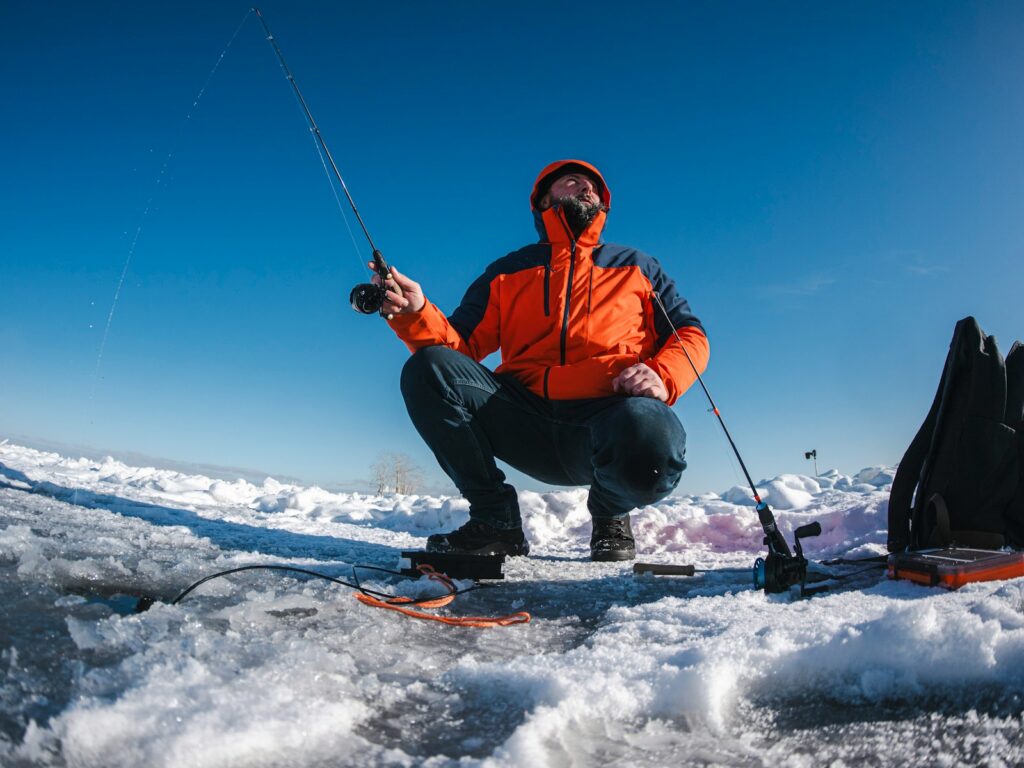
Certain destinations stand out for beginners due to their consistent ice conditions, abundant fish populations, and supportive fishing communities. Lake of the Woods in Minnesota offers reliable ice conditions from December through March and boasts healthy populations of walleye, northern pike, and perch, with many resorts providing guided trips and equipment rentals perfect for first-timers. Devil’s Lake in North Dakota is renowned for its perch fishing, with excellent ice conditions and a robust infrastructure of plowed roads, rental shelters, and local guides.
The eastern shore of Lake Champlain between Vermont and New York provides excellent opportunities for perch, pike, and lake trout in a scenic setting with generally stable ice conditions. For a more southern option, Chautauqua Lake in western New York offers good ice fishing for walleye, perch, and crappie, often with milder temperatures than more northern locations. These destinations all feature active local fishing communities willing to share information and assist newcomers to the sport.
Finding the Fish: Location Strategies
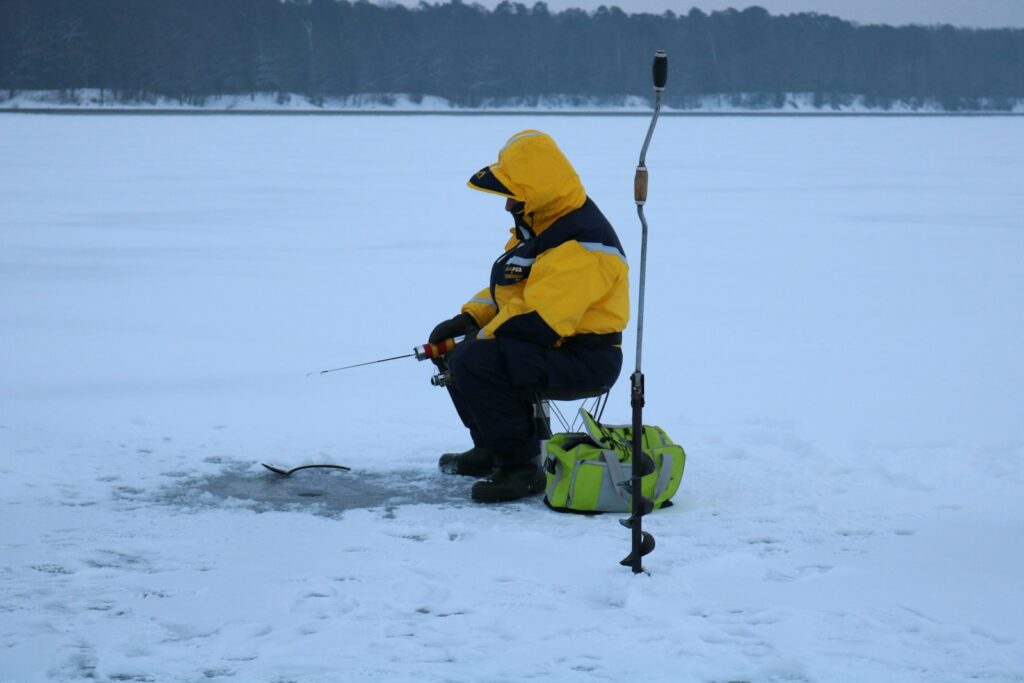
Successful ice fishing begins with understanding that fish don’t distribute randomly under the ice but concentrate in specific areas based on oxygen levels, food availability, and comfortable temperatures. In early winter, focus on shallow weed beds in 5-15 feet of water where fish often feed actively before settling into deeper winter patterns. As winter progresses, many species move to deeper areas with stable conditions – look for underwater structures like drop-offs, humps, and channel edges that concentrate fish. Different species have different preferences: walleye often hold near the bottom in areas where depths change, perch frequently school up over clean bottoms or near weed edges, while pike patrol the edges of weed beds looking for prey.
Local bait shops are invaluable resources for beginners, as they typically have current information on what depths and areas are producing fish. Many lakes also have online fishing forums where anglers share real-time reports about productive locations and techniques.
Target Species and Their Winter Habits
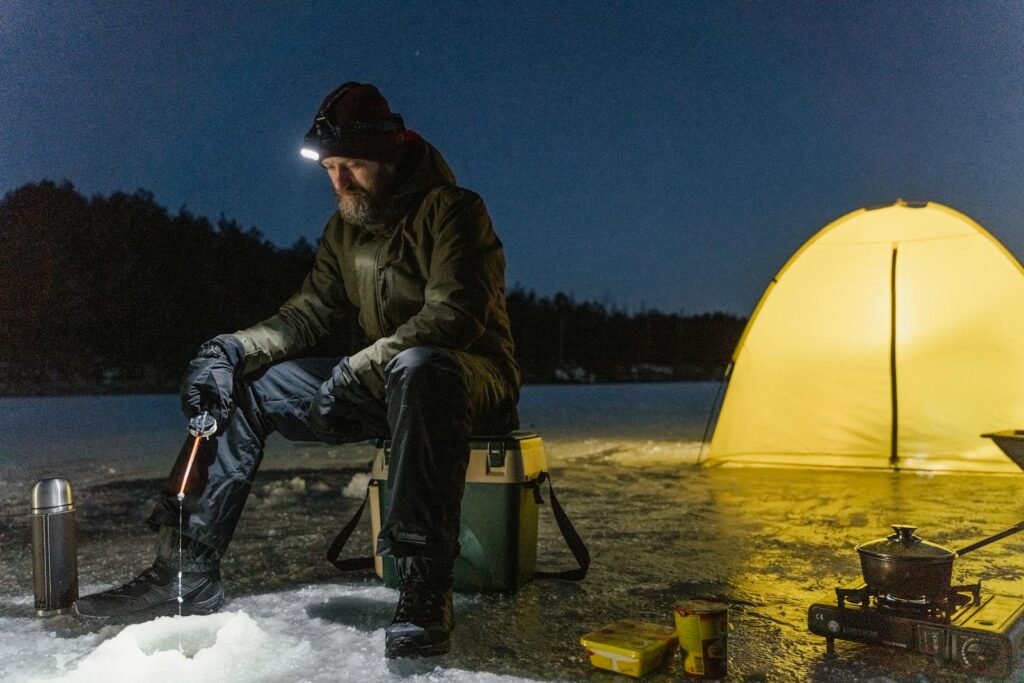
Understanding the winter behavior of common ice fishing target species dramatically improves your chances of success. Walleye, a popular and delicious target, are often most active during dawn and dusk periods, preferring depths of 15-30 feet near structure like drop-offs or underwater points where they can ambush prey. Yellow perch, ideal for beginners due to their abundance and willingness to bite, typically school in large numbers and move between shallow and deeper water throughout the day, feeding on small aquatic insects and minnows. Northern pike, known for explosive strikes and good eating qualities when properly prepared, patrol the edges of weed beds and shallow flats, particularly during mid-winter when oxygen levels might be higher in these areas.
Panfish like bluegill and crappie suspend at various depths, often relating to underwater structure or the edges of weed beds, with crappies typically suspending higher in the water column than bluegills. Each species responds differently to lure presentations, with walleye often preferring subtle jigging, perch responding to rapid up-and-down motions, and pike attracted to larger, flashier presentations.
Effective Ice Fishing Techniques
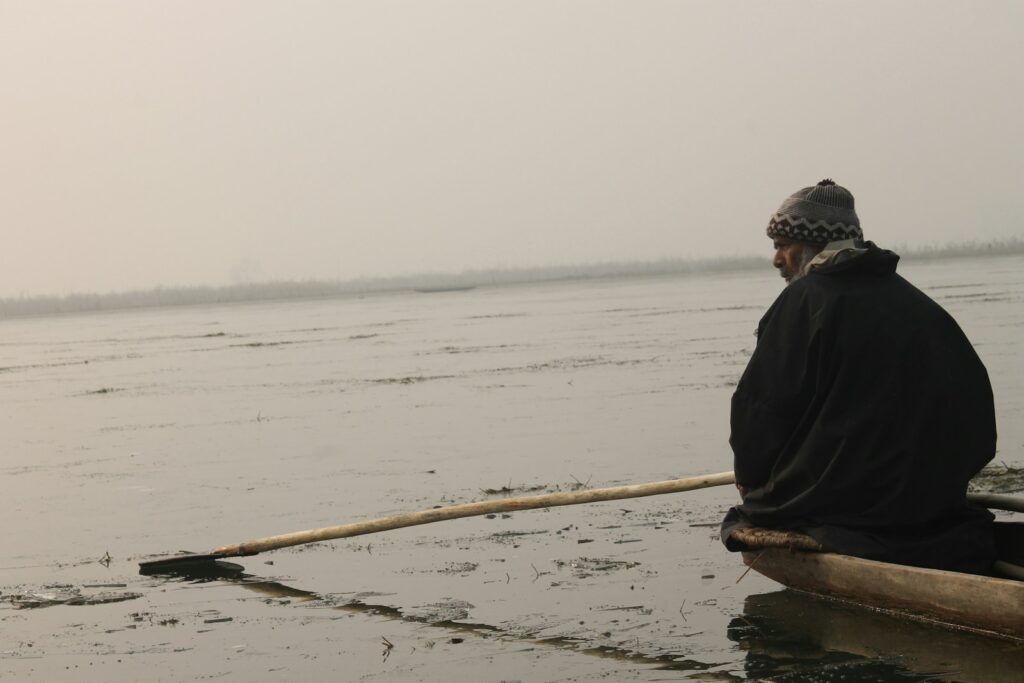
Mastering a few fundamental techniques will significantly improve your catch rate on the ice. Jigging – the most common and versatile approach – involves gently moving your rod tip up and down to impart action to your lure, making it appear like a wounded baitfish or active insect that triggers predatory instincts. The dead stick method, particularly effective when fish are less active, involves setting up a stationary rod with live bait and waiting for fish to find it naturally. Tip-ups, mechanical devices that signal when a fish takes your bait by raising a small flag, allow you to cover more area by monitoring multiple holes simultaneously – these are particularly effective for larger predators like pike and lake trout.
For all these techniques, the most crucial factor is often finding the right depth; don’t hesitate to adjust your presentation up and down in the water column until you locate active fish, as they may be feeding just off the bottom, suspended in mid-water, or even just below the ice depending on the species and conditions.
Bait and Lure Selection
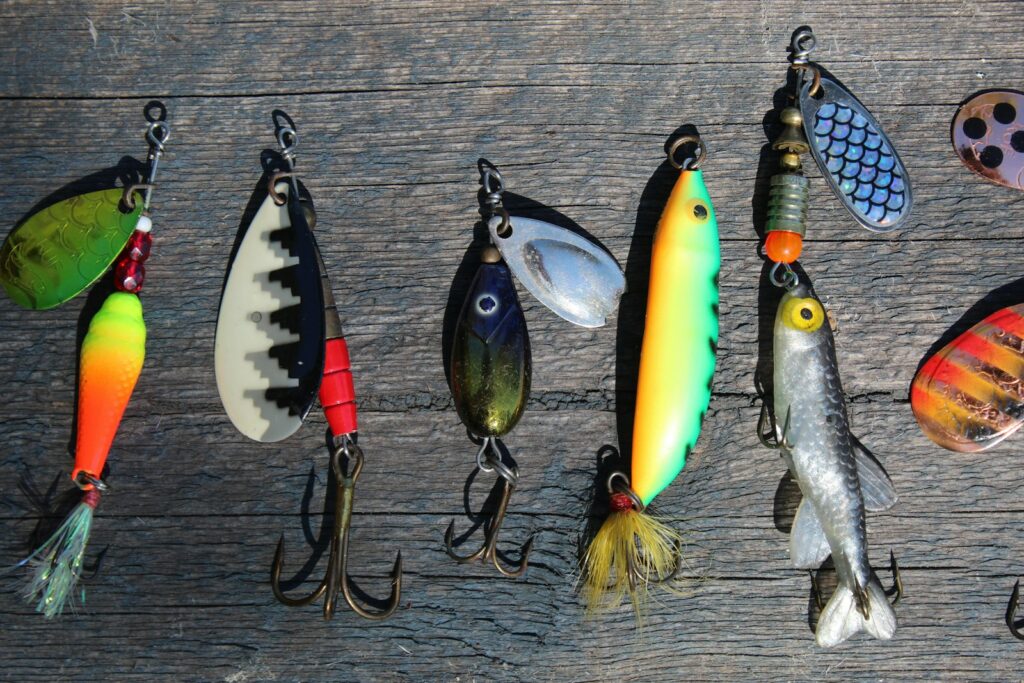
Choosing the right bait or lure can make a tremendous difference in your ice fishing success. Live bait often produces consistent results for beginners – waxworms and spikes (maggots) work exceptionally well for panfish, while minnows are the top choice for predatory species like walleye, pike, and lake trout. When using artificial lures, small jigs tipped with soft plastics imitate aquatic insects and small baitfish effectively, with colors like chartreuse, white, and pink frequently triggering strikes in clear water conditions. Spoons, which create flash and vibration as they flutter through the water column, excel at attracting fish from greater distances, making them ideal when fish aren’t concentrated directly below your hole.
The most productive approach often combines artificial lures with live bait – for example, a small jig tipped with a waxworm provides both the visual appeal of the jig and the scent and taste of the live bait. Remember that winter fish typically have slower metabolisms and may prefer smaller presentations than they would during summer months, so don’t hesitate to downsize your offerings if you’re not getting bites.
Setting Up Your Fishing Hole
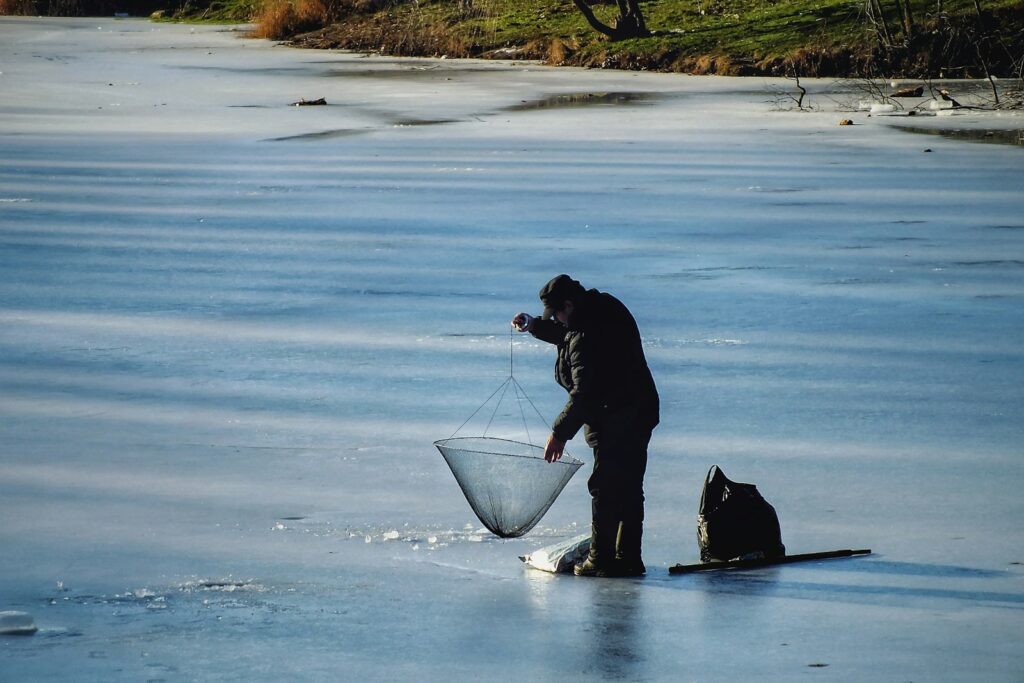
Creating and maintaining an effective fishing hole involves more than simply drilling through the ice. Start by selecting a location based on your target species and the underwater structure you’re targeting, then use your auger to drill a hole between 6-10 inches in diameter (larger holes make landing bigger fish easier but freeze over more quickly). After drilling, use your ice scoop to remove all ice chips and slush from the hole, as these can interfere with your line and freeze your reel if they splash up. If you’re fishing in extremely cold conditions, prevent your hole from refreezing by occasionally scooping out forming ice crystals or using a commercial ice hole solution.
When fishing multiple holes, space them at least 5-10 feet apart to cover different depths or structure edges effectively without creating a hazardous honeycomb effect in the ice. If you’re planning to fish the same location for multiple days, marking productive holes with biodegradable material like pine boughs can help you quickly relocate them on return visits.
Electronics and Technology for Ice Fishing

While not essential for beginners, modern electronics can dramatically improve your ice fishing success rate by eliminating much of the guesswork. Portable fish finders designed specifically for ice fishing show you the depth, bottom composition, underwater structure, and even individual fish directly below your hole, allowing you to adjust your presentation to the exact depth where fish are holding. Underwater cameras provide a fascinating real-time view of fish interacting with your bait, helping you refine your jigging technique based on how fish respond. GPS units help you precisely mark productive fishing spots for future reference and navigate safely across large frozen lakes, especially valuable in low visibility conditions or when returning after dark.
For those ready to invest further, specialized ice fishing electronics packages combine these functions into single units designed specifically for the harsh conditions of winter fishing. Even smartphone apps can enhance your experience by providing lake maps, weather forecasts, and platforms for sharing information with other anglers about current conditions and bite patterns.
Ice Fishing Shelters: Options and Benefits
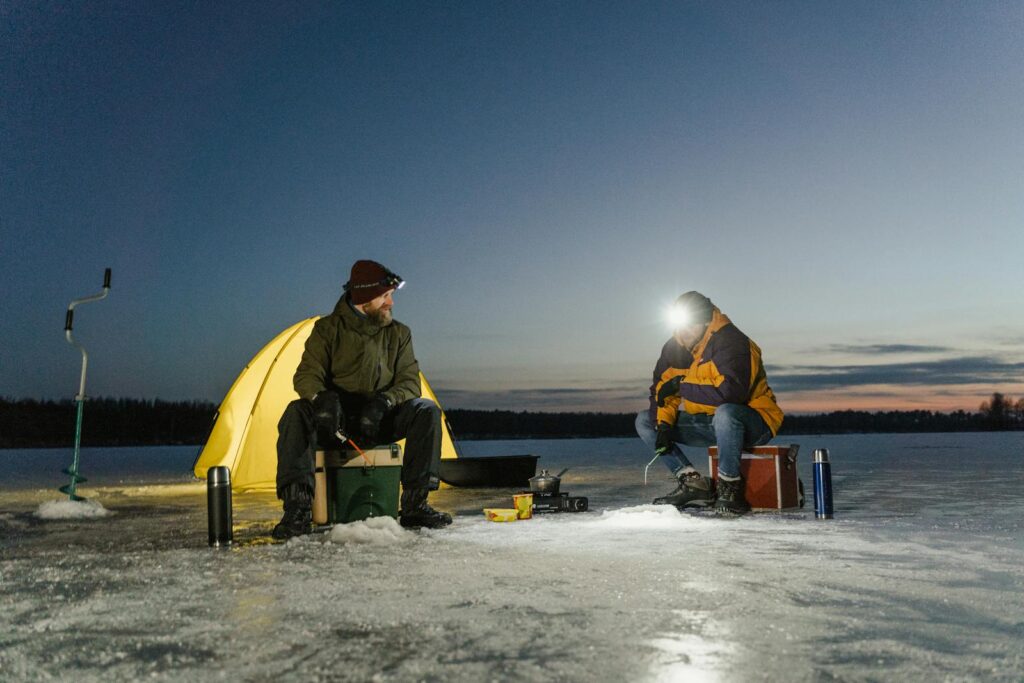
While many hardened anglers fish directly exposed to the elements, ice shelters dramatically enhance comfort and can extend your time on the ice, particularly during harsh weather conditions. Pop-up shelters, resembling quick-setup tents made with insulated materials, offer an excellent entry point for beginners – they’re relatively affordable, portable, and can be set up or taken down in minutes. Flip-over shelters function as both a sled to transport gear and a shelter once flipped over your fishing hole, providing excellent mobility for anglers who prefer to search for fish rather than waiting in one spot.
For longer expeditions or group outings, hub-style shelters offer more interior space and typically accommodate 3-6 people comfortably, creating a social atmosphere that’s perfect for introducing friends and family to the sport. The most significant advantage of using any shelter is temperature regulation – a quality shelter can be 20-30 degrees warmer than outside temperatures, especially when used with a small, portable propane heater (always with proper ventilation). This comfort allows you to fish longer, use more sensitive techniques requiring bare hands, and focus on catching fish rather than battling the elements.
Community and Etiquette on the Ice
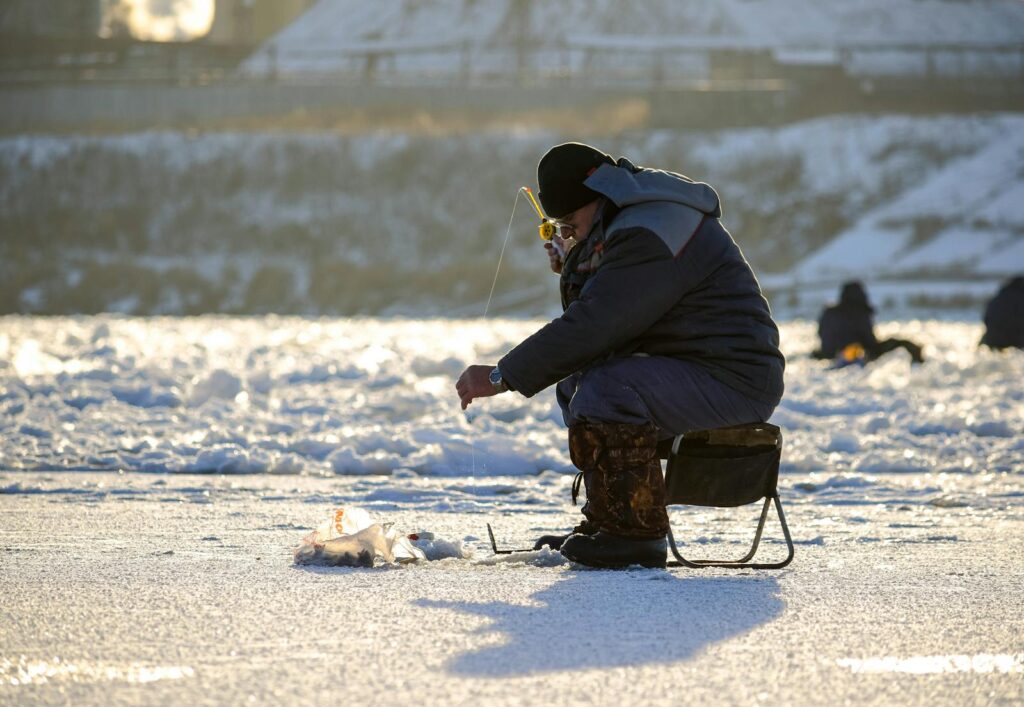
Ice fishing has a strong community aspect, with its own unwritten rules and etiquette that help everyone enjoy the experience safely. When arriving at a popular ice fishing location, maintain reasonable distance between yourself and other anglers – a good rule of thumb is to stay at least 50-100 feet away unless invited closer. If you’re unsure about ice conditions, it’s perfectly acceptable to politely ask others already on the ice about thickness and safety concerns, as most experienced ice anglers are happy to share this crucial information with newcomers. Always pack out everything you bring in, including food wrappers, beverage containers, and used fishing line, as litter on the ice not only creates environmental hazards but also damages relationships with landowners and other outdoor enthusiasts.
The ice fishing community typically operates with a spirit of camaraderie and knowledge-sharing; don’t hesitate to strike up conversations about what’s working and what isn’t, as these interactions often lead to valuable tips, new techniques, and sometimes even lasting friendships built around a shared passion for winter fishing.
Tips for a Successful and Enjoyable First Trip

Your first ice fishing adventure will be more rewarding if you approach it with realistic expectations and proper preparation. Consider starting with a half-day trip rather than a full day, allowing yourself to experience the activity without committing to long hours if you find it’s not enjoyable. Bringing an experienced friend or hiring a guide for your first outing provides valuable hands-on instruction that can accelerate your learning curve significantly. Focus on species that are more likely to provide action – panfish like bluegill and crappie often make excellent first targets as they’re typically abundant and willing to bite. Pack high-energy snacks and hot drinks to maintain your energy and warmth throughout the day, as staying properly fueled is crucial in cold conditions.
Most importantly, measure success by the overall experience rather than just fish caught – appreciate the unique winter landscape, the camaraderie of fellow anglers, and the peaceful solitude that ice fishing offers even when the fish aren’t cooperating. By keeping a positive attitude and viewing your first trip as a learning experience, you’re more likely to develop a lasting appreciation for this traditional winter pastime
Conclusion
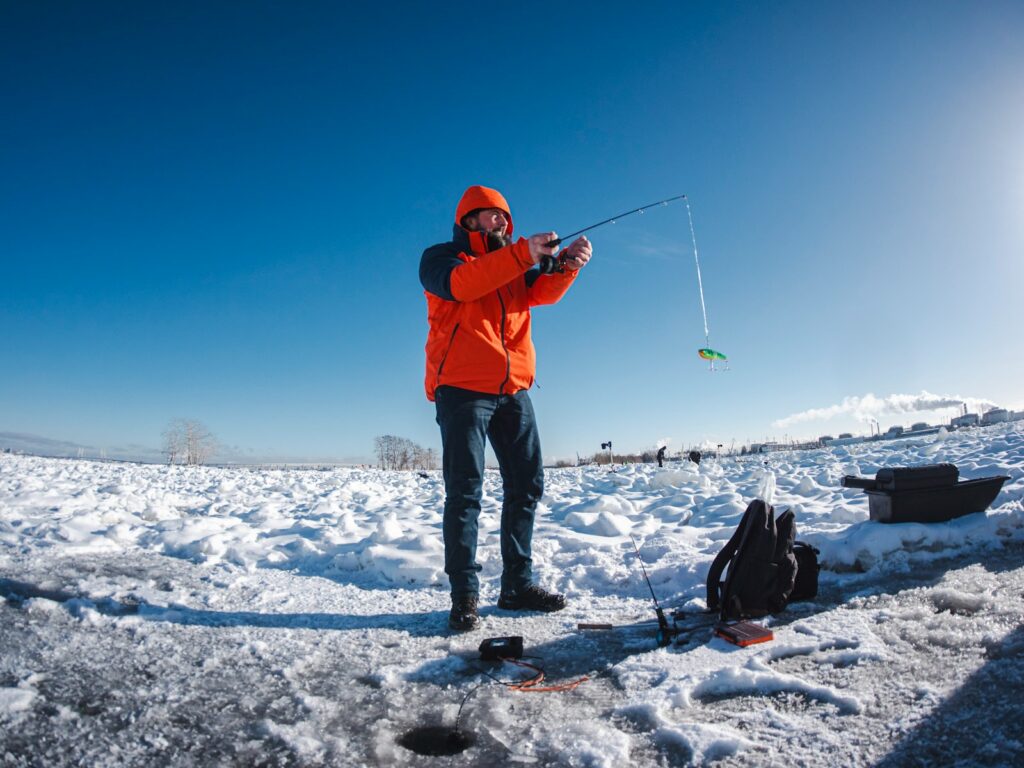
Ice fishing offers a wonderful way to embrace winter’s beauty while enjoying the thrill of the catch. With proper preparation, safety awareness, and basic knowledge of techniques and locations, beginners can quickly develop confidence on the ice. Remember that each outing provides valuable experience, whether you’re catching fish or simply learning about their winter habits. As you progress, you’ll discover your own favorite spots, techniques, and target species that make this seasonal pursuit uniquely rewarding. The ice fishing community welcomes newcomers with open arms, so don’t hesitate to ask questions and share experiences with fellow anglers.
Bundle up, stay safe, and discover why so many fishing enthusiasts eagerly await the moment when lakes and rivers transform into nature’s winter fishing platforms.
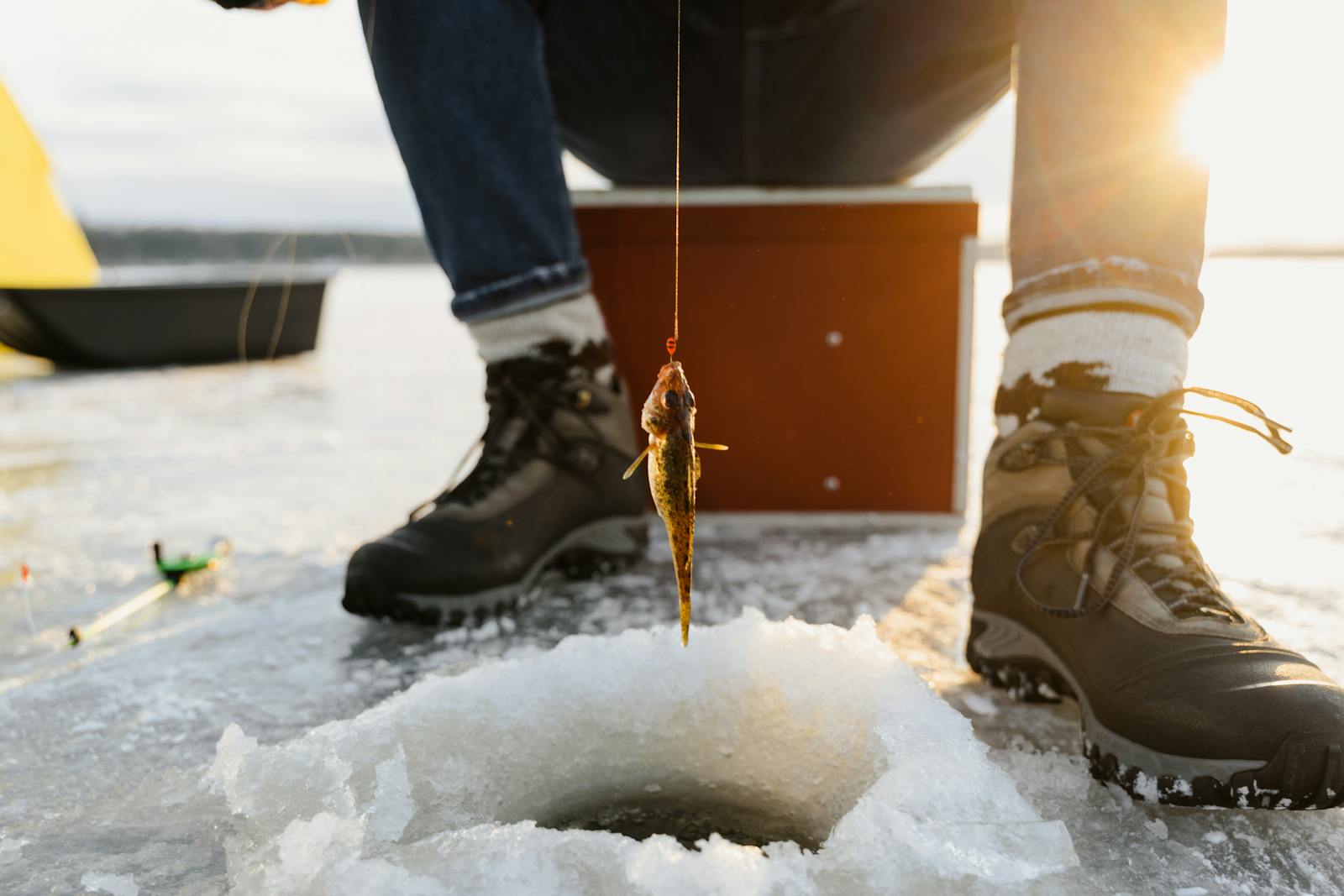
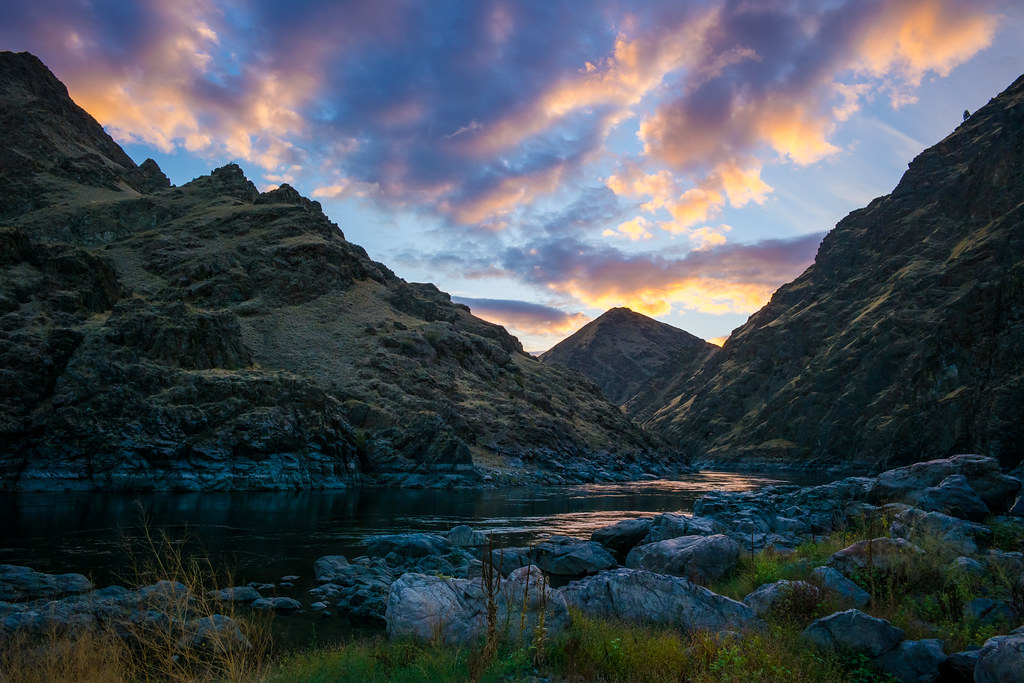

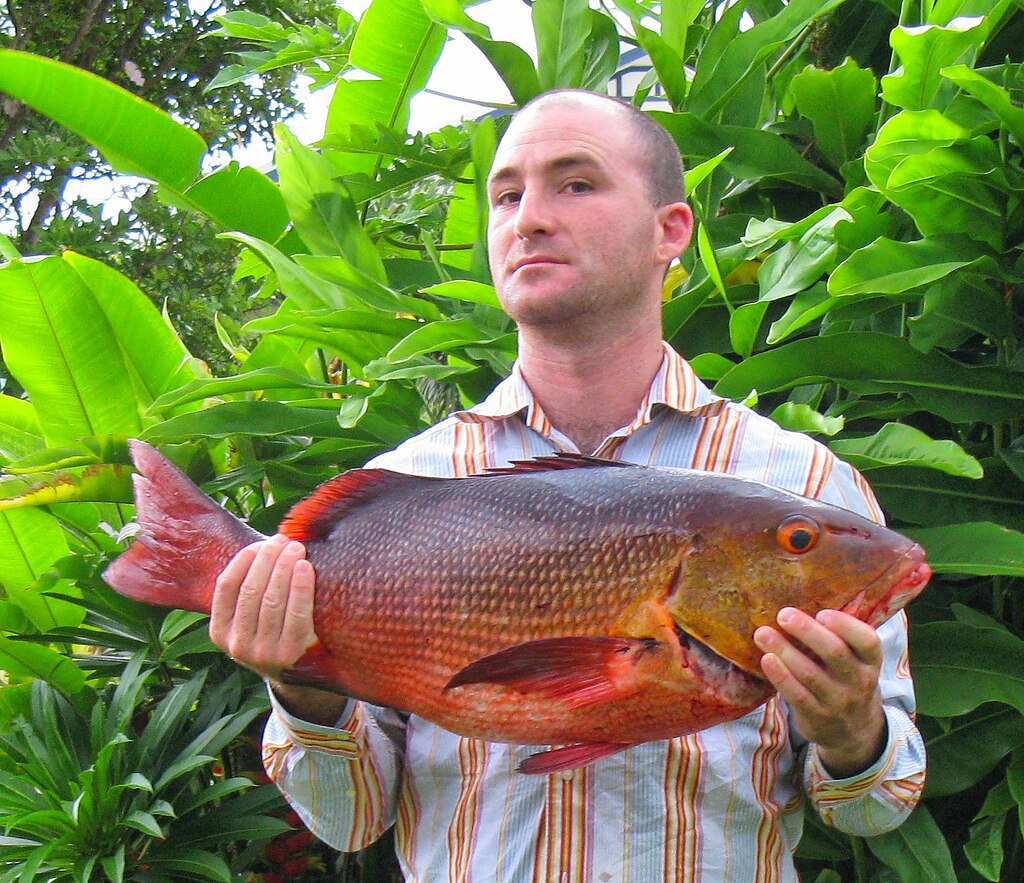










Post Comment